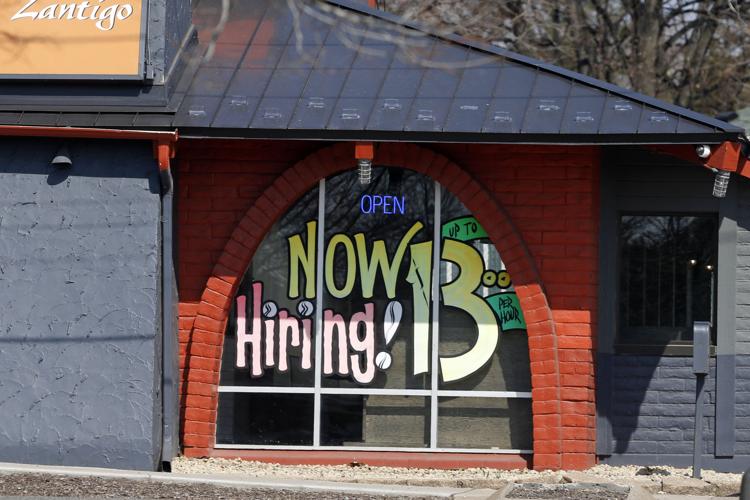Study: U.S. and Midwest prosperity at peak before coronavirus pandemic

A window message at a Mexican fast-food restaurant advertises for job hiring Thursday, April 23, 2020, in St. Paul, Minn. where the business remains closed due to the coronavirus.
(The Center Square) – Midwestern states varied widely in key metrics before the coronavirus pandemic forced lockdowns and shuttered businesses, according to a new study by a London, England-based think tank.
The second annual United States Prosperity Index (USPI), released Tuesday by the Legatum Institute, concludes the country was experiencing its highest ever prosperity in the 10 years preceding the outbreak of the coronavirus, with the beginning of 2020 the crest of the economic boom.
This prosperity, however, wasn’t spread equally among all 50 states. Northern states, the report notes, fared much better on the prosperity metrics than did Southern states.
Legatum researchers also noted the prosperity wasn’t divided equally among all counties in the states experiencing the greatest amount of growth.
That disparity is also apparent in the Midwest.
“The USPI shows that the prosperity of the Midwest region is very similar to that of the U.S. as a whole,” Legatum Director of Metrics Shaun Flanagan told The Center Square in an email.
“The region is more prosperous than the South East and South West, but less prosperous than the North East and about the same as the West,” he said.
“However, the Index also shows that, within the Midwest, performance of states varies considerably,” Flanagan added.
“Minnesota is the region’s top performing state, ranking 3rd for prosperity overall – although it ranks just 22nd for personal freedom, its lowest ranking pillar – while Wisconsin ranks 12th and Michigan 29th. Missouri is the weakest performing state in the region, ranking 37th overall, while Ohio is 35th, although Ohio ranks 13th for market access and infrastructure. Michigan has seen a large increase in prosperity over the last decade, rising three ranks, driven by a big improvement in governance and education,” Flanagan said.
The USPI study also reports a nationwide improvement in education and living conditions for the past 10 years, although test scores for grade 4 and grade 8 have recently exhibited a decline.
Legatum also notes both physical and mental health had already declined nationally before the pandemic. Although behavioural risk factors such as smoking and excessive alcohol use have fallen, “deaths of despair” such as drug overdoses and suicides have increased in the 16- to 64-year-old age group over the past 10 years.
Under the Social Capital metric, Legatum reports a general decline in trust in institutions, weakened social networks, and falling participation in civic and social activities. Noting “strong and inclusive communities and institutions are cornerstones of society,” the report says the deterioration of social capital “is a warning sign for future prosperity.”
The Midwest’s social capital decline was less pronounced than elsewhere in the country, Flanagan said.
“Societies are more inclusive in the Midwest than in the U.S. as a whole, with higher levels of safety and security and stronger governance and social capital,” he told The Center Square.
“However, the majority of states have more open economies than those in the Midwest. The lived experience of residents as measured through living conditions, health, education, and the natural environment, is broadly the same in the Midwest as the rest of the U.S.,” he continued.
According to the study, the nation’s prosperity was caused by an increase in open economies and assisted by low unemployment numbers boosting productivity and competitiveness. Additionally, rising prosperity also increased the financial reserves of state governments, a development now at risk due to unforeseen spending to counteract the coronavirus.

